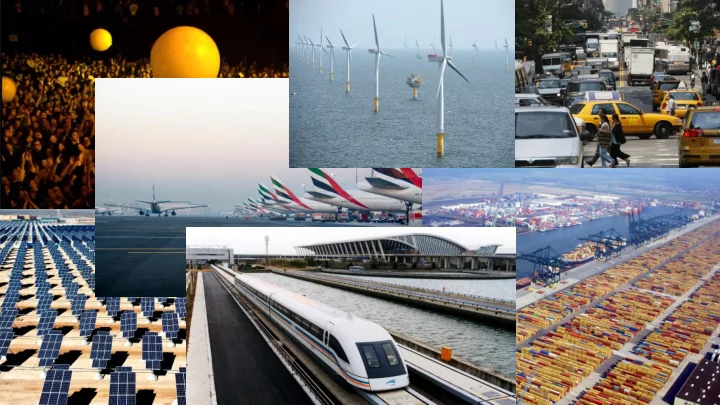

Introduction to Agent Based Modeling Dr.ir. Igor Nikolic Asociate professor, Faculty of TPM, TU Delft
Lecture goals Understand the concepts of generative science Understand what an Agent, and an Agent Based Model is. Help you start exploring ABM on your own.
Generative Science “If you did not grow it, you did not explain it!” (Epstein 1999) Build understanding from the bottom up ! J.M. Epstein. Agent-based computational models and generative social science. , 4 (5):41 – 60, 1999.
Generative Science Central principle : “Phenomena can be described in terms of interconnected networks of (relatively) simple units. Deterministic and finite rules and parameters of natural phenomena interact with each other to generate complex behavior.” J.M. Epstein. Agent-based computational models and generative social science. , 4 (5):41 – 60, 1999.
Generativist Question How could the decentralized local interactions of heterogeneous autonomous agents generate the given regularity ?
Generativist Experiments 1. Situate an initial population of autonomous heterogeneous agents in a relevant spatial environment; allow them to interact according to simple local rules, and thereby generate - or ’grow’ - the macroscopic regularity from the bottom up. 2. Given a well understood, well described population of agents, what kinds of behavior are they capable of under different conditions
Example uses Short term: Operations E.g. Airbus A380 emergency evacuation simulations https://www.youtube.com/watch?v=kVOikppwgxw
Example uses Medium term: Option testing E.g. Simulating the best purchasing strategy for a oil refinery to minimize disruptions due to shipping delays.
Example uses Long term: Systems evolution E.g. Simulating the effects of carbon tax vs carbon trading on power generation in NL. (Chappin, 2011, p. 110)
Agent Based Model An Agent is a persistent thing which has some state we find worth representing, and which interacts with other agents, mutually modifying each other’s states. The components of an agent-based model are a collection of agents and their states, the rules governing the interactions of the agents and the environment within which they live. C.R. Shalizi. Methods and techniques of complex systems science: An overview. , arXiv.org:nlin/0307015, 2006. URL .
Agent “Agent is a thing that does things to other things”
States Agent state and behavior and Model state and behavior Stuff that Agents knows or has (including memory) Can be private or public Can be static or dynamic and can depend on the Rules E.g.: Profits, color, location, State of an agent is a composite of internal and local and global
Decision rules Agents “internal models” Decision and transformation rules → from inputs and states to action and behavior Can be static or dynamic
Actions Agent will perform (or not perform) some action , based on Input from other Agents Own states And its internal decision rules Action can Affect other Agents Own state Own rule Environment
Environment What the Agent is in. Provides the agents with information and structure Everything that is not an Agent, but is relevant. It affects the Agent, and Agent can affect it. Structure : Soups Space (grid, GIS, etc...) Networks
Time ABM take place in discrete time Time progresses in ticks Between two ticks, everything is assumed to happen in the same time, attempting to simulate the parallelism in real world As computers are serial processing machines, the order of Agent iteration is very important.
Simulating Energy Transitions. Emile Chappin, 2011, Delft University of Technology, the Netherlands. Thesis, 2011. ISBN: 9789079787302
Further reading and resources NetLogo – a great free and open source Agent Based Modeling environment with lots of examples http://ccl.northwestern.edu/netlogo/ Generative Social Science: Studies in Agent-Based Computational Modeling - Joshua M. Epstein http://press.princeton.edu/titles/8277.html Agent-Based Modelling of Socio-Technical Systems, K.H. Van Dam, Z. Lukszo, I. Nikolic https://www.springer.com/computer/theoretical+computer+scienc e/book/978-94-007-4932-0
Thank you for your attention! Please post any questions you may have on our discussion forum
References • http://i1.ytimg.com/vi/cfUOrjnzqNw/maxresdefault.jpg • http://upload.wikimedia.org/wikipedia/commons/b/b3/Traffic_in_Manhattan.jpg • http://upload.wikimedia.org/wikipedia/commons/8/81/Emirates_tails_(8499979565).jpg • http://upload.wikimedia.org/wikipedia/commons/4/45/Giant_photovoltaic_array.jpg • http://upload.wikimedia.org/wikipedia/commons/d/d1/A_maglev_train_coming_out,_Pudong_International_Airport,_Shang hai.jpg • http://www.xpats.com/sites/default/files/antwerp_port.jpg • http://upload.wikimedia.org/wikipedia/commons/5/54/Sheringham_Shoal_Wind_Farm_2012.jpg • http://upload.wikimedia.org/wikipedia/commons/d/d6/Fugle,_%C3%B8rns%C3%B8_073.jpg • http://rewardhealth.com/wordpress/wp-content/uploads/2011/02/Joshua-Epstein.png • http://pixabay.com/static/uploads/photo/2012/04/05/01/16/stick-25590_150.png • http://pixabay.com/static/uploads/photo/2013/07/12/16/50/stickman-151358_150.png • http://pixabay.com/static/uploads/photo/2013/07/12/17/15/calling-151869_150.png • http://farm9.staticflickr.com/8216/8269691015_884a14a44b_z.jpg • https://www.youtube.com/watch?v=kVOikppwgxw • http://farm3.staticflickr.com/2810/10458381225_823395cc06_z.jpg • J.M. Epstein. Agent-based computational models and generative social science. Complexity, 4 (5):41 – 60, 1999. • Chappin, E. J. L. (2011). Simulating Energy Transitions. (Doctor), Delft University of Technology, Delft. (42)
Recommend
More recommend